Jelly Beans – Flavorful & Colorful History Of Jelly Beans
A traditional confection, Jelly Beans have a soft, chewy interior and a thin sugar coating. The limitless flavor options have contributed to the delightful, small candy’s rising appeal. These essential components work together to provide the ideal white space for a broad range of natural and artificial tastes and a large array of brilliant colors.
In this article, we will investigate and learn more about the delectable and enticing Jelly Beans.
Please leave a review or any memories of this snack in the comments at the bottom of this page. Thank you!
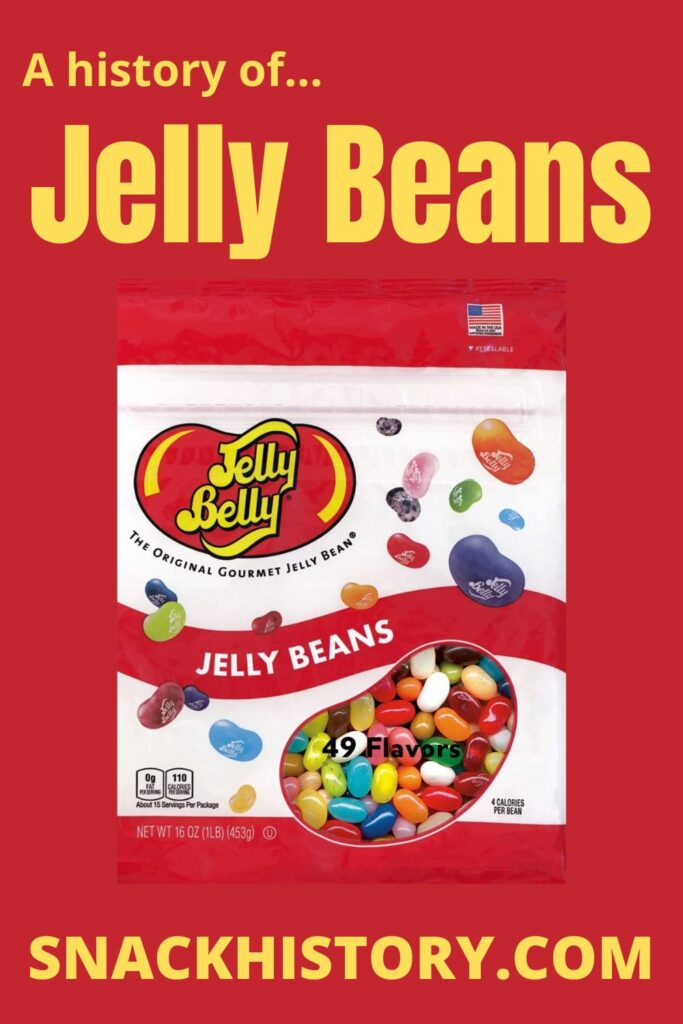
History
Turkish delights and Jordan Almonds, two-century-old candies, are regarded as the parents of Jelly Beans.
Jordan Almonds are thought to have originated in ancient Rome as nuts covered with honey. By the 15th century, after sugar was introduced to European cuisine, the nuts were coated with a hard, shiny sugar casing. This was done through a time-consuming process called panning, in which up to 30 layers of sugar syrup are applied one on top of the other, with each layer being only a tenth of an inch thick.
Another very similar candy to the Jelly Beans is Turkish Delights. Turkish Delight’s origins are unknown, although a popular myth connects it to Bekir Effendi, a Turkish confectioner from the 18th century, who is claimed to have created a jelly-like treat that was flavored with rosewater and sprinkled with powdered sugar. Nobody knows who originally had the brilliant idea to create the jelly bean by mixing the soft delight’s interior with the firm sugar covering of the nut.
Jelly Beans were first documented in print in the late 1800s. A popular but unverified story suggests they originated during the American Civil War when Boston confectioner William Schrafft encouraged civilians to send them as gifts to Union troops. By the late 19th century, Jelly Beans had become a common penny candy and were so widespread that the term “Jelly Bean” was included in Webster’s dictionary by 1905.
Jelly beans weren’t connected to Easter until the 1930s, most likely because they resembled an egg. One of the most popular Easter candies nowadays is still Jelly beans.
Even though the connection to the Civil War is debatable the Americans probably acquired Necco Wafers. By 1915, it had even entered common use as a derogatory epithet for a guy who was worthless and feeble. Lackluster Jim Powell, an aimless character, is the protagonist of F. Scott Fitzgerald’s 1920 short story “The Jelly-Bean.”
Colors & Shape
Red is probably the color you’ll choose from the assortment of beans in your basket. It turns out that everyone likes red and pink candy, and Jelly Beans are no different. Charles Spence, a psychologist at Oxford University, believes that this is most likely because of how food color impacts our perception of taste. Because we perceive red foods as sweeter than they actually are, red Jelly Beans may have an advantage over green foods, which most people perceive as sour.
It is believed that the bean-shaped sweets may have originated from Schrafft’s ties to Boston. Due to baked beans’ enormous popularity in colonial Boston, the city has long been regarded as a “bean town.” Or maybe the shape developed as a result of the era’s confectioners’ penchant for creating sweets in the form of vegetables. After all, cultivated vegetables and beans made up the majority of Americans’ diets at the time.
Why Are Jelly Beans Associated with Ronald Reagan?
Red may be sweet, but not everybody likes it. Famous for his love of Jelly Beans, Ronald Reagan started eating them in the 1960s in an effort to quit smoking. The appreciative Jelly Belly firm delivered Washington, D.C. 2.5 tons of red, white, and blue patriotic Jelly Beans as a gesture of congratulations on his 1981 inauguration. Ironically, none of the three Jelly Beans was a favorite of the president.
The Blueberry Jelly Belly was specifically developed for the president by Jelly Belly. Ronald Reagan even said once: “We can scarcely start a conference or make a decision without passing around the jar of jelly beans.”
Flavors
Numerous kinds of Jelly Beans are currently offered, including the popular (red) cherry, as well as buttered popcorn, toasted marshmallows, mango, maple syrup, Dr. Pepper, chocolate pudding, tangerine, and bacon.
For fans of Harry Potter, the Jelly Belly firm sells a variation of Bertie Bott’s Every Flavor Beans from the wizarding world. In addition to cherry, lemon, and cinnamon flavors, some jelly beans also contain soap, black pepper, earwax, dirt, earthworms, and boogers. Well, they are not nearly as bad as they sound.
For the sophisticated Jelly bean consumer, Jelly Belly also offers sparkling off-white Jelly beans flavored with champagne and golden-brown jelly beans flavored with draft beer, which is said to have been inspired by a clean, crisp, and wheat Hefeweizen beer.
Jelly Beans in Pop Culture
The art film “The Time You Have” by artist Ze Frank showcases a stunning use of jelly beans. The film represents the days of a typical human life with 28,835 jelly beans, creating a visually striking representation.
The astonishingly tiny number of days we have left to accomplish the things that are important to us and the activities we love is revealed when Frank counts up the number of days we spend sleeping, eating, working, performing domestic chores, watching television, and driving — with the number of Jelly Beans. It is a powerful display. It forces you to reevaluate your life and priorities, which doesn’t frequently occur with sugar.
Similar to the earlier phrases “dandy” and “fop,” “jellybean” or “jelly-bean” was used to describe a young man who dressed tastefully but had nothing else to recommend. During the 1910s and early 1920s, it was common in American slang. The Jelly Bean, a tale by F. Scott Fitzgerald, that featured a similar figure, was published in 1920.
During Beatlemania in 1964, fans in the United States showered the band with jelly beans. The Beatles were thought to be like Jelly Babies by American fans. But since they were unaware of what they were, they threw Jelly Beans instead, not realizing that Jelly Beans hurt when they struck their target since they are much tougher than Jelly Babies.
George Harrison later stated that they did not like jelly babies or fruit gums, so he asked the audience to imagine how they felt standing on stage attempting to avoid the thing.
As already mentioned above, the immensely popular Harry Potter series includes the use of the nasty “Bertie Bott’s Every Flavor Bean.” This is one of the best-known uses of Jelly Beans. Bertie Bott’s Every Flavor Bean is a product you can purchase online. However, some of these flavors haven’t transferred well into real life.
What Are Jelly Beans Made Of?
It should come as no surprise that the basic components of Jelly Beans, which are candies, are sugar, corn syrup, and starch. To provide the chewy, gelatinous texture, starch is added. Panning, a method of sugaring, produces a thin, crispy coating. The same process is used to create the thin candy coating that is seen on other delicacies, including M&Ms.
Flavoring ingredients are included to distinguish distinct Jelly bean varieties. Depending on the producer, they may be natural or artificial. The candy may occasionally have a little quantity of emulsifying agent added to maintain a constant texture, and edible beeswax may be used to cover the Jelly bean to protect it from sticking or dissolving in humid environments. The popularity of Jelly beans is set to grow as new tastes are introduced every day.
Jelly Belly Jelly Beans
The Goelitz Confectionery Company, established in Belleville, Illinois, by 24-year-old Gustav Goelitz, produced a range of sweets, including candy corn and “royal buttercreams.” The heirs of Goelitz first launched Jelly Beans in the 1960s, along with other penny candies like tangerine slices and spice drops. In 1965, they achieved a significant breakthrough by adding flavors to the cores of their Goelitz Mini Jelly Beans.
In Temple City, California, David Klein founded the distribution business Garvey Nut in 1976. He approached the Goelitz Company to produce “Jelly Belly” Jelly Beans after coming up with the idea for them.
Jelly Belly a modest eight colors and tastes of Jelly Beans were released that year. For about $5 million, Klein and his partner sold Jelly Belly to the Goelitz Company in 1980. In 1986, the Herman Goelitz Candy Company moved to Fairfield, California, and soon after, they started giving tours to the general public.
More than 100 distinct types of Jelly Beans are now produced by Jelly Belly. They are Kosher-certified, dairy-free, fat-free, vegetarian-friendly, and gluten-free. Additionally, since the Peanut Butter flavor has been discontinued, they are produced in a facility devoid of peanuts for people with this extremely common food allergy. One ounce (25 pieces) contains around 100 calories.
Logo
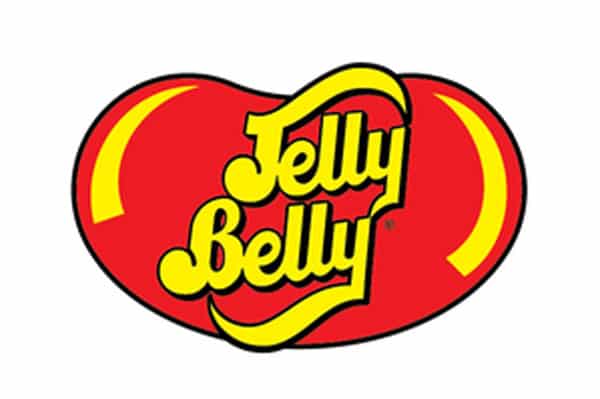
Ingredients
- Sugar
- Glucose Syrup
- Modified Cornstarch
- Acidity Regulators (E325, E330, E331)
- Peach Puree Concentrate
- Strawberry Puree
- Blueberry Puree
- Flavorings
- Concentrates of (Spirulina, Apple, Carrot, Black Carrot, Black Currant, Safflower, Pumpkin, Purple Carrot, Hibiscus)
- Lemon Puree
- Glazing Agents (E901, E903, E904)
- Colours (E100, E150d, E153, E160a, E162, E171)
- Chocolate (Sugar, Cocoa Mass, Cocoa Butter, Emulsifier: E322 Soy Lecithin, Flavouring)
- Passion Fruit Juice Concentrate
- Orange Puree
- Cocoa Powder
- Watermelon Juice Concentrate
- Coconut
- Tangerine Juice Concentrate
- Cherry Juice Concentrate
- Apple Juice Concentrate
- Lime Juice Concentrate
- Invert Sugar Syrup
- Tapioca Dextrin
- Salt
- Chocolate contains Cocoa Solids 35% minimum
Nutrition
| Serving Size: | 35 pieces (40g) | % Daily Value* |
| Amount Per Serving | ||
| Calories | 140 | |
| Calories from Fat | 0 | |
| Total Fat | 0g | 0% |
| Sodium | 10mg | 0% |
| Total Carbohydrates | 36g | 12% |
| Sugars | 24g | |
| Protein | 0g | |
| Vitamin C | 6% |
- Percent Daily Values are based on a 2000-calorie diet.
Pictures
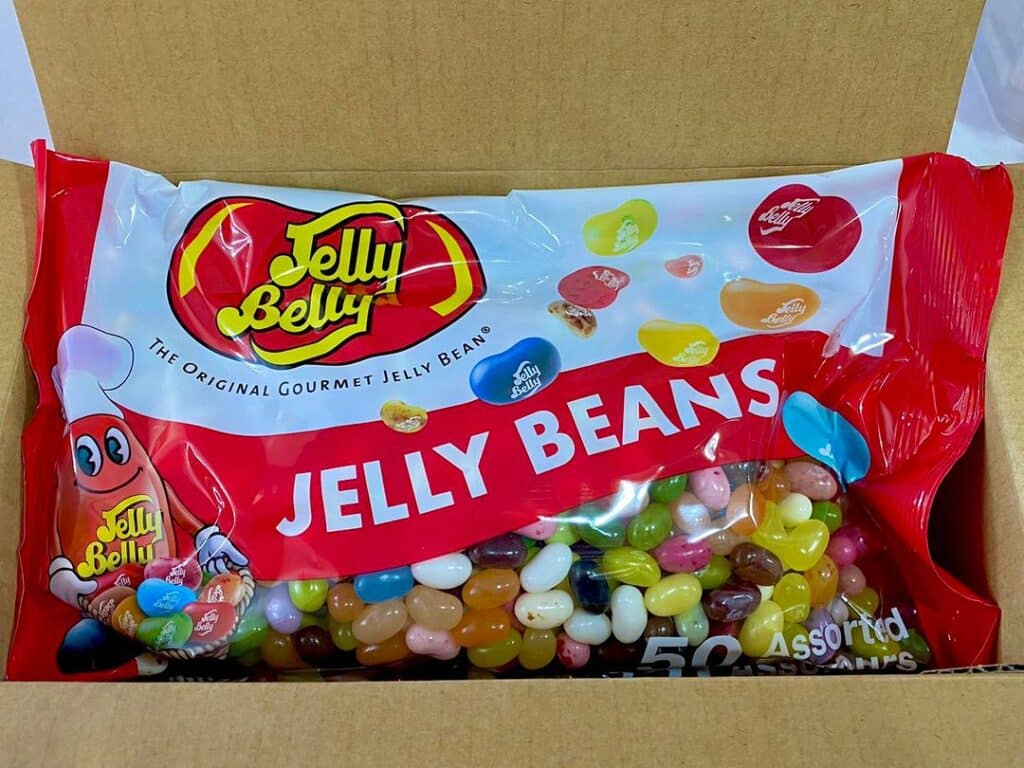
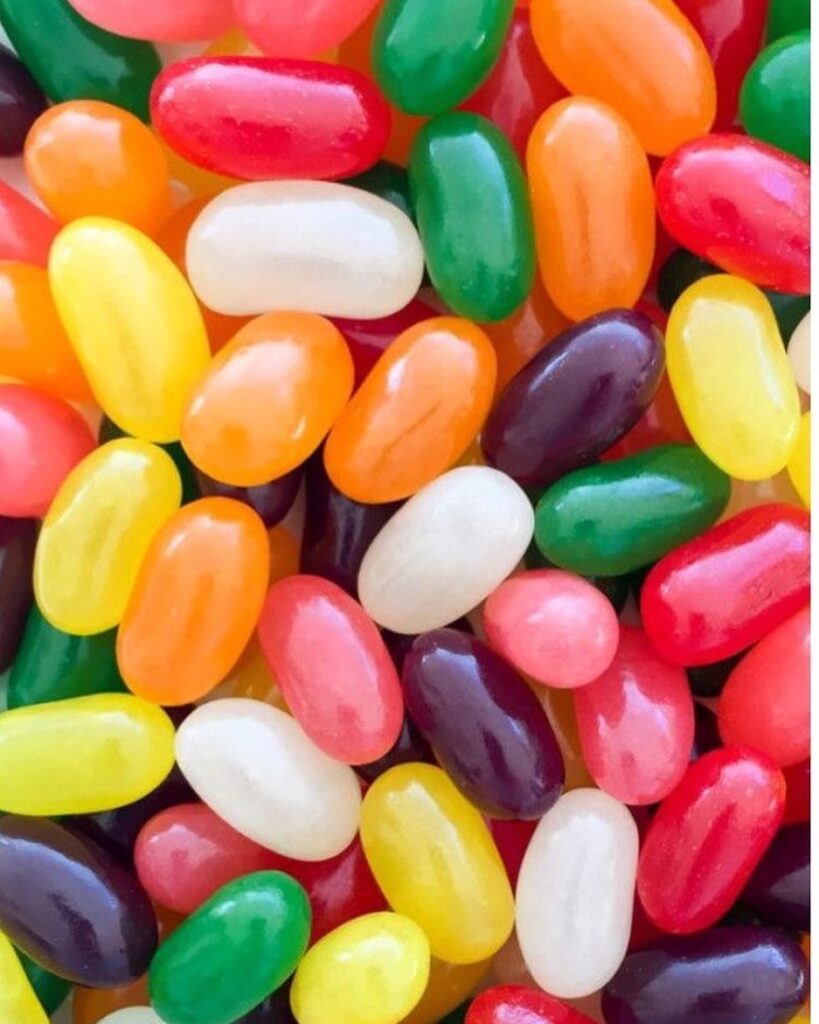
Bottom Line
Jelly beans are a must-have addition to every Easter basket. Every Easter, we consume 16 billion of those tiny candies. They are thought to be the spawn of Turkish Delight, the sugar-powdered jelly treat. Although no one is certain of the precise year when Jelly Beans first appeared on the American confectionery market, they have been a year-round pleasure for more than a century.
FAQ
How are Jelly Beans made?
The process of Jelly Belly-making begins with a hot liquid candy that gets flavoring and coloring added to make the beans distinct. The hot liquid then gets pumped into molds where they’re carted into a dry room overnight. The dry room acts as an oven to help the molds firm up.
What are Jelly Beans made of?
Jelly Beans are primarily made of sugar and sold in a wide variety of colors and flavors.
How many flavors of Jelly Beans are there?
Jelly Belly Jelly Beans are available in more than 100 different flavors.
How many calories in Jelly Beans?
There are 375 calories in every 100g of Jelly Beans.
Who invented Jelly Beans?
The jelly bean is believed to have been invented by William Schrafft a sweet maker from Boston.
Which President like Jelly Beans?
President Reagan used to receive shipments of Goelitz Mini Gourmet Jelly Beans directly from the company. When Herman Goelitz introduced its Jelly Belly® brand of jelly beans in 1976, it began including the new brand in Reagan’s regular shipment.
When were Jelly Beans invented?
The earliest known appearance of a jelly bean is an 1861 advertisement for William Schrafft of Boston that promoted the sending of jelly beans to soldiers in the Union Army during the Civil War.

Nato is a content writer and researcher with a background in psychology. She’s passionate about writing about the candy industry and exploring the cultural significance of sweets and treats. She believes that the stories behind our favorite snacks can reveal a great deal about our values.
Please leave a review or any memories of this snack in the comments below. Thank you!
Click here for a full A-Z list of Snacks and Candy
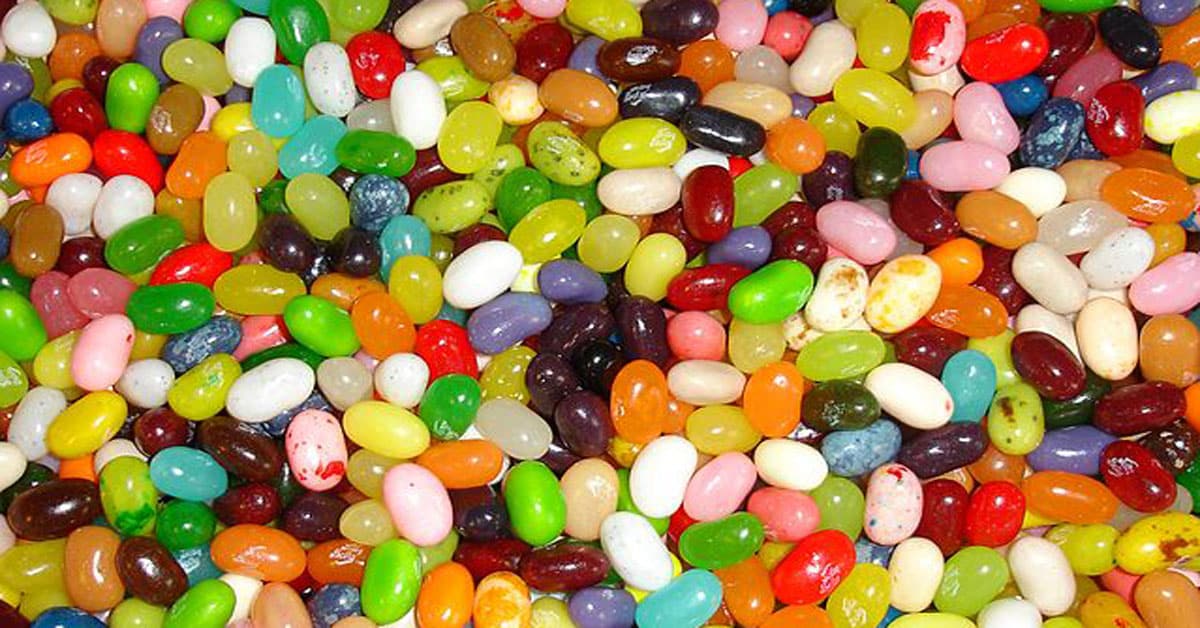
As an old timer I recall eating many classic flavors of Jelly Beans over the years. I still prefer those flavors of grape, cherry, lemon, lime, orange and less favorite licorice. I look for jelly beans packaged with these classics. A change I have noticed over time is the filling or jelly. In my early years and certainly while in school, I could drop a bean in my mouth and allow the hard outer shell to melt in my mouth. What remained was a firm clear piece of gelatin. Today’s beans seem to be all gooey soft sugar with little or no gelatin at all. Wonder what happened? Easter is a time of jelly beans, but like Ronald Reagan, I try to keep a jar full at arms reach.